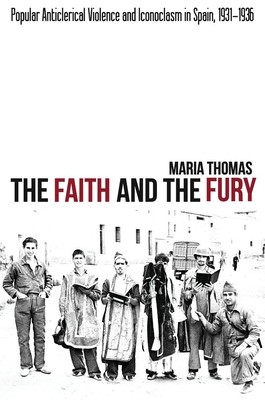
- We will send in 10–14 business days.
- Author: Maria Thomas
- Publisher: Liverpool University Press
- ISBN-10: 1789760135
- ISBN-13: 9781789760132
- Format: 15.2 x 23.1 x 1.8 cm, softcover
- Language: English
- SAVE -10% with code: EXTRA
Reviews
Description
The five-year period following the proclamation of the Republic in April 1931 was marked by physical assaults upon the property and public ritual of the Spanish Catholic Church. These attacks were generally carried out by rural and urban anticlerical workers who were frustrated by the Republics practical inability to tackle the Churchs vast power. On 17-18 July 1936, a right-wing military rebellion divided Spain geographically, provoking the radical fragmentation of power in territory which remained under Republican authority. The coup marked the beginning of a conflict which developed into a full-scale civil war. Anticlerical protagonists, with the reconfigured structure of political opportunities working in their favour, participated in an unprecedented wave of iconoclasm and violence against the clergy. During the first six months of the conflict, innumerable religious buildings were destroyed and almost 7,000 religious personnel were killed. To date, scholarly interpretations
of these violent ac
EXTRA 10 % discount with code: EXTRA
The promotion ends in 17d.19:27:13
The discount code is valid when purchasing from 10 €. Discounts do not stack.
- Author: Maria Thomas
- Publisher: Liverpool University Press
- ISBN-10: 1789760135
- ISBN-13: 9781789760132
- Format: 15.2 x 23.1 x 1.8 cm, softcover
- Language: English English
The five-year period following the proclamation of the Republic in April 1931 was marked by physical assaults upon the property and public ritual of the Spanish Catholic Church. These attacks were generally carried out by rural and urban anticlerical workers who were frustrated by the Republics practical inability to tackle the Churchs vast power. On 17-18 July 1936, a right-wing military rebellion divided Spain geographically, provoking the radical fragmentation of power in territory which remained under Republican authority. The coup marked the beginning of a conflict which developed into a full-scale civil war. Anticlerical protagonists, with the reconfigured structure of political opportunities working in their favour, participated in an unprecedented wave of iconoclasm and violence against the clergy. During the first six months of the conflict, innumerable religious buildings were destroyed and almost 7,000 religious personnel were killed. To date, scholarly interpretations
of these violent ac


Reviews